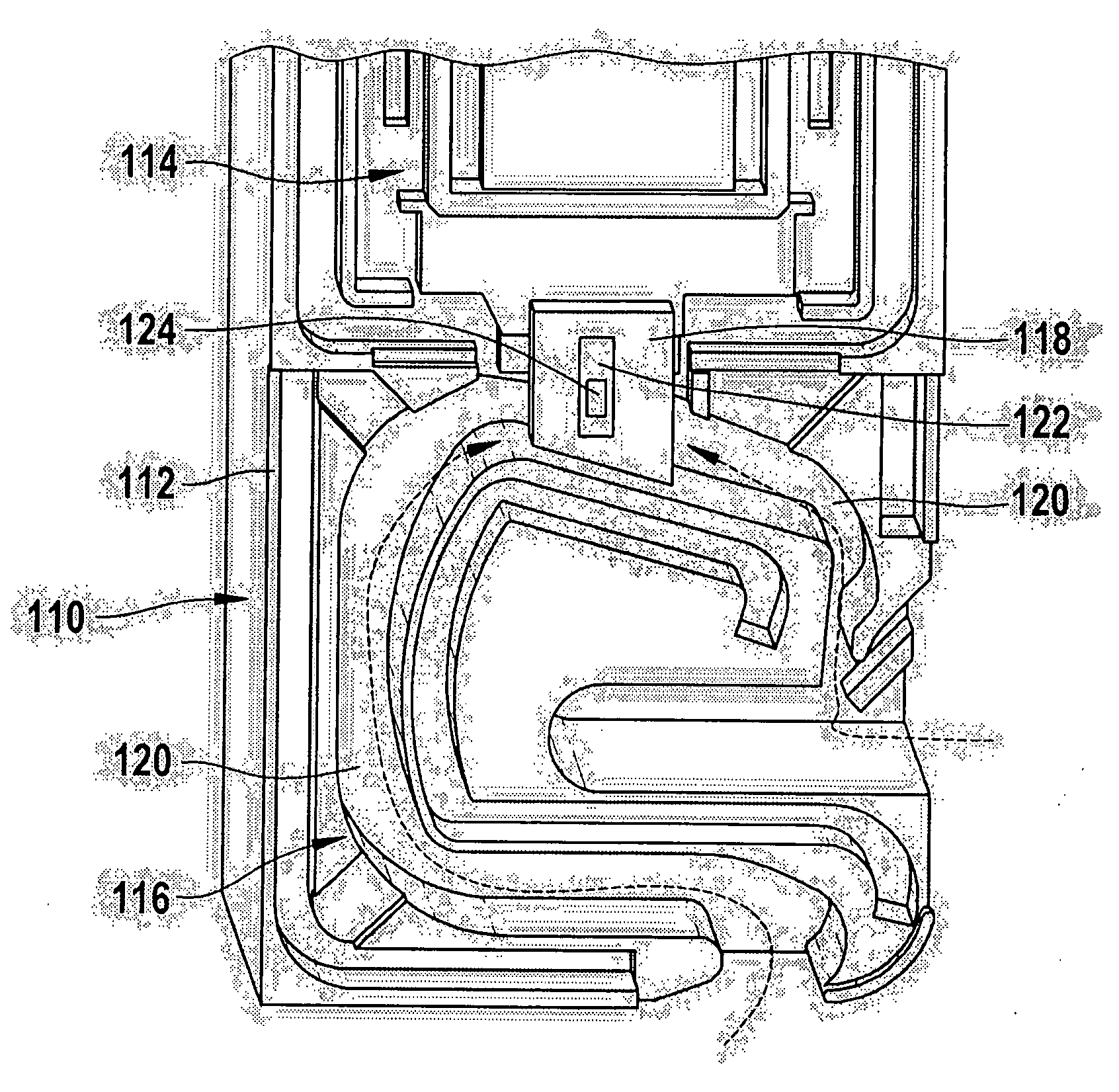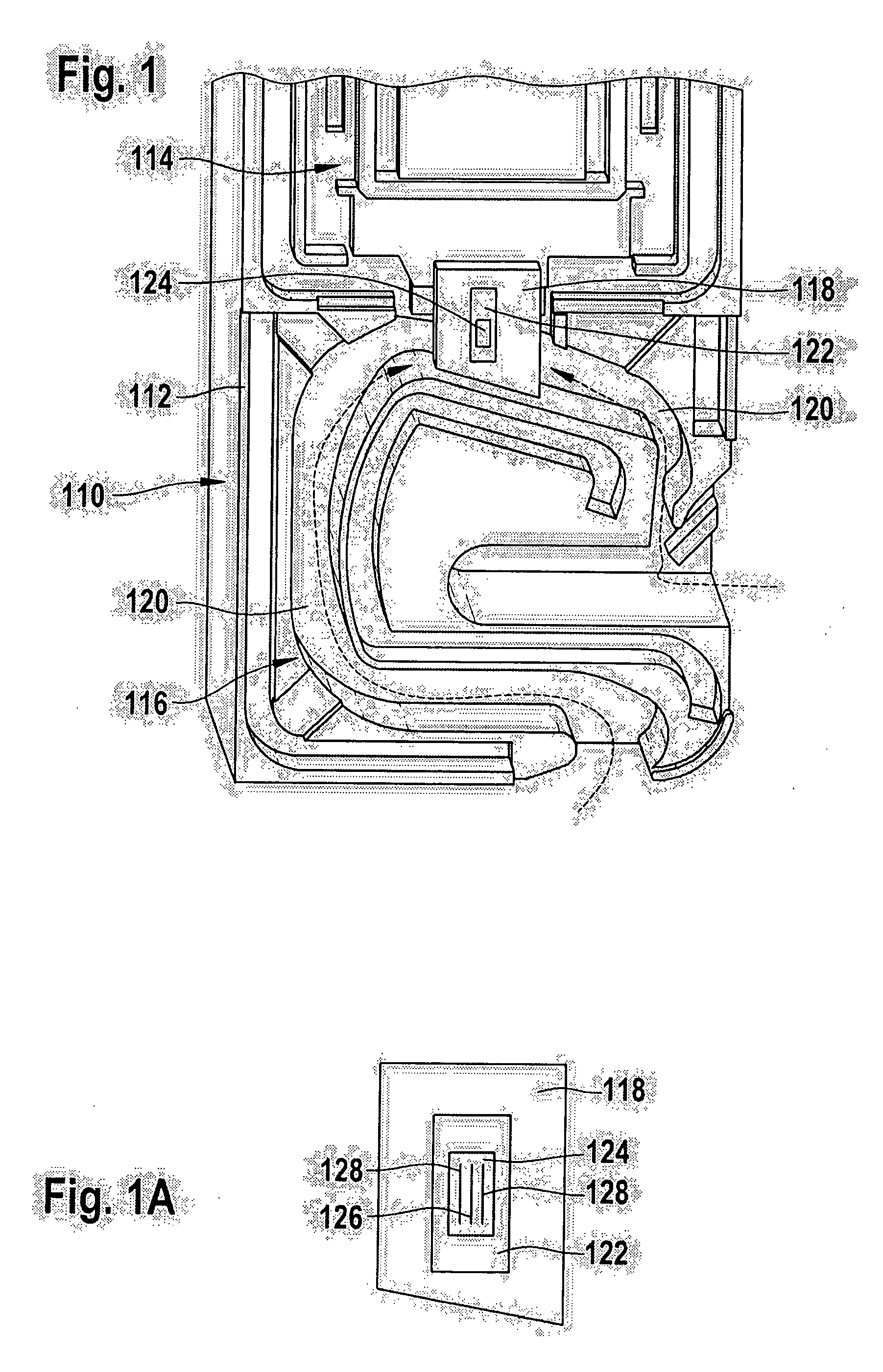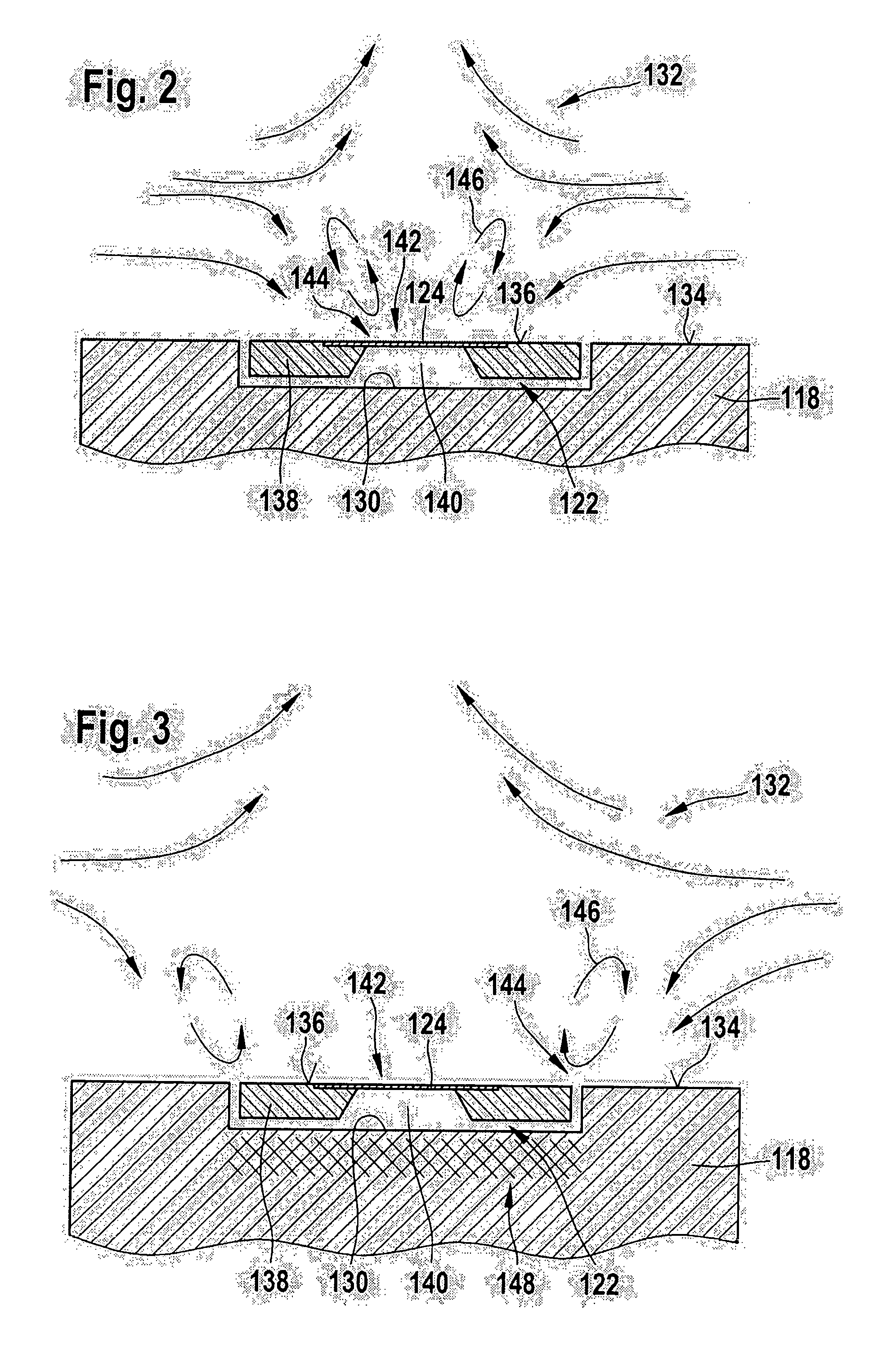Heated Hot-Film Air-Mass Sensor
a sensor and hot film technology, applied in the direction of electrical control, instruments, machines/engines, etc., can solve the problems of contaminating the sensor chip, such as with oil, and affecting the measurement accuracy of the measurement, so as to minimize the contamination of the surface of the sensor chip and optimize the displacement process
- Summary
- Abstract
- Description
- Claims
- Application Information
AI Technical Summary
Benefits of technology
Problems solved by technology
Method used
Image
Examples
Embodiment Construction
[0030]A hot-film air-mass sensor 110 is shown in FIG. 1, in a view from above. Hot-film air-mass sensor 110 has a housing 112, which may be developed, for instance, as an injection molded component. Housing 112 has an electronics area 114 and a channel region 116. Electronic area 114 essentially has a recess for accommodating a sensor housing which, however, is not shown in FIG. 1, to keep things simple. Formed onto the sensor housing is a chip carrier 118 developed as sensor nose 118 which extends into a bypass channel 120 that is let into channel region 116 of housing 112. The entire hot-film air-mass sensor 110 is built into an intake tract of an internal combustion engine in such a way that air from the intake tract is able to flow out of the intake tract through bypass channel 120 to chip carrier 118.
[0031]A sensor chip 122 is let into chip carrier 118, and it has an active area in the form of a diaphragm 124. Sensor chip 122 is developed, for instance, according to the device ...
PUM
| Property | Measurement | Unit |
|---|---|---|
| temperatures | aaaaa | aaaaa |
| temperature | aaaaa | aaaaa |
| temperature | aaaaa | aaaaa |
Abstract
Description
Claims
Application Information
 Login to View More
Login to View More - R&D
- Intellectual Property
- Life Sciences
- Materials
- Tech Scout
- Unparalleled Data Quality
- Higher Quality Content
- 60% Fewer Hallucinations
Browse by: Latest US Patents, China's latest patents, Technical Efficacy Thesaurus, Application Domain, Technology Topic, Popular Technical Reports.
© 2025 PatSnap. All rights reserved.Legal|Privacy policy|Modern Slavery Act Transparency Statement|Sitemap|About US| Contact US: help@patsnap.com



